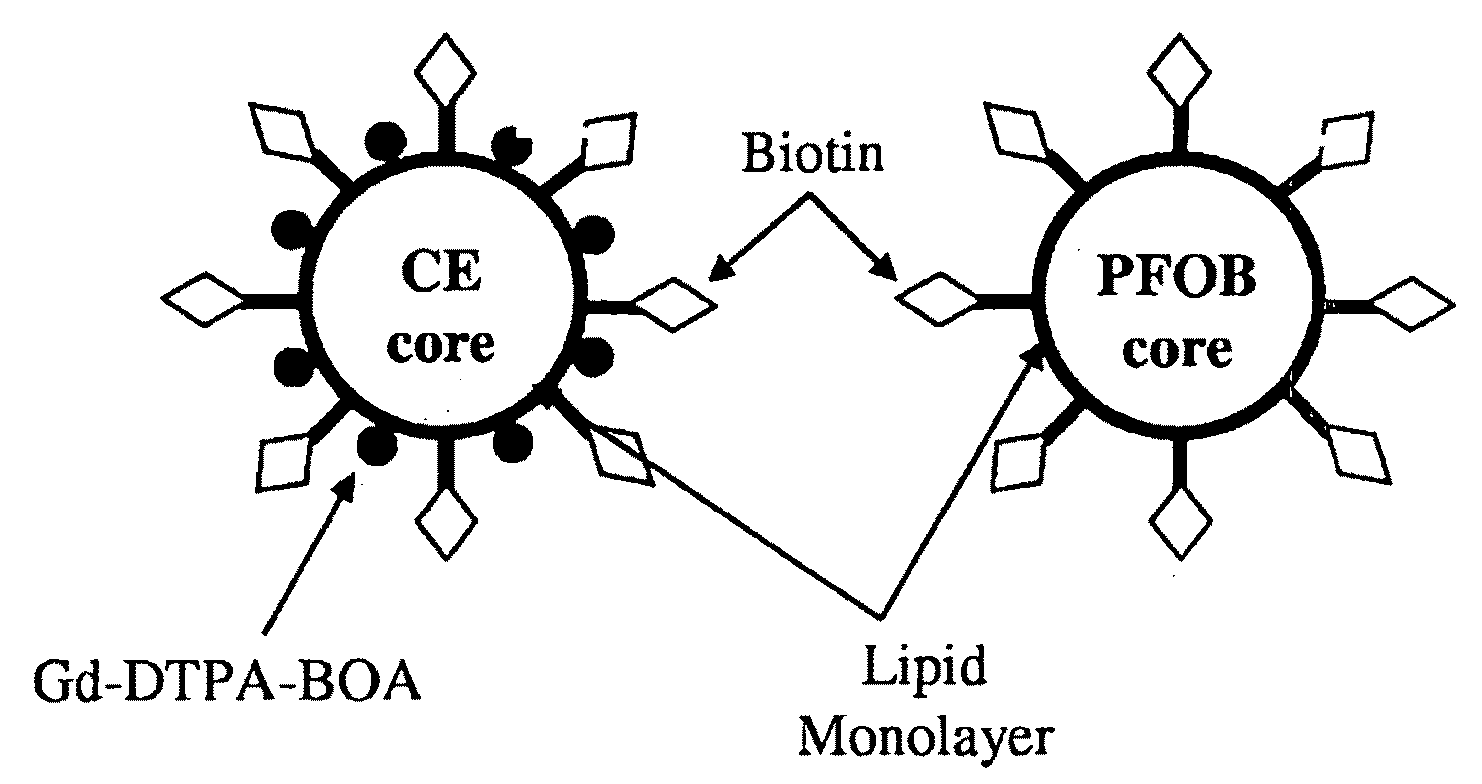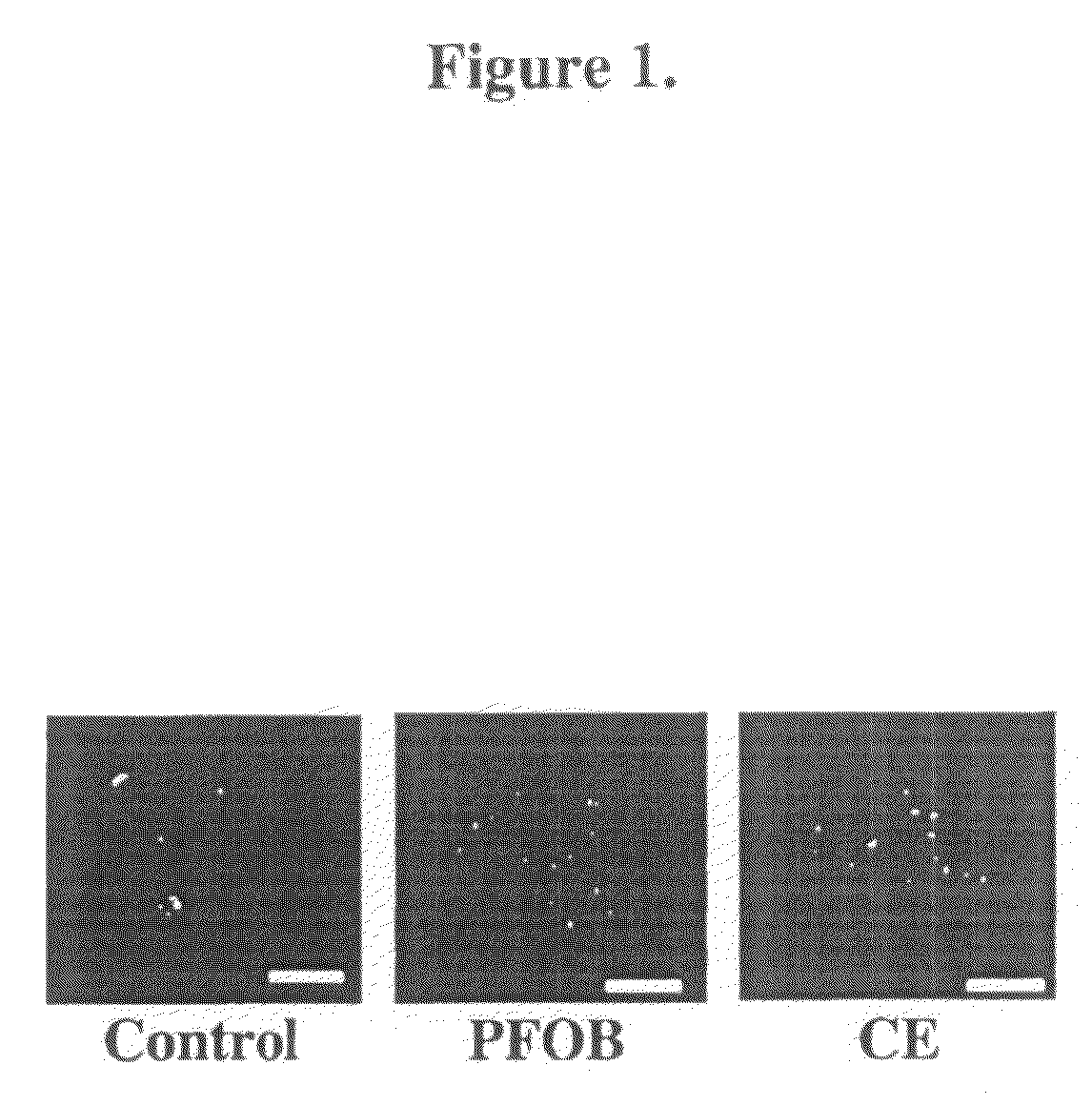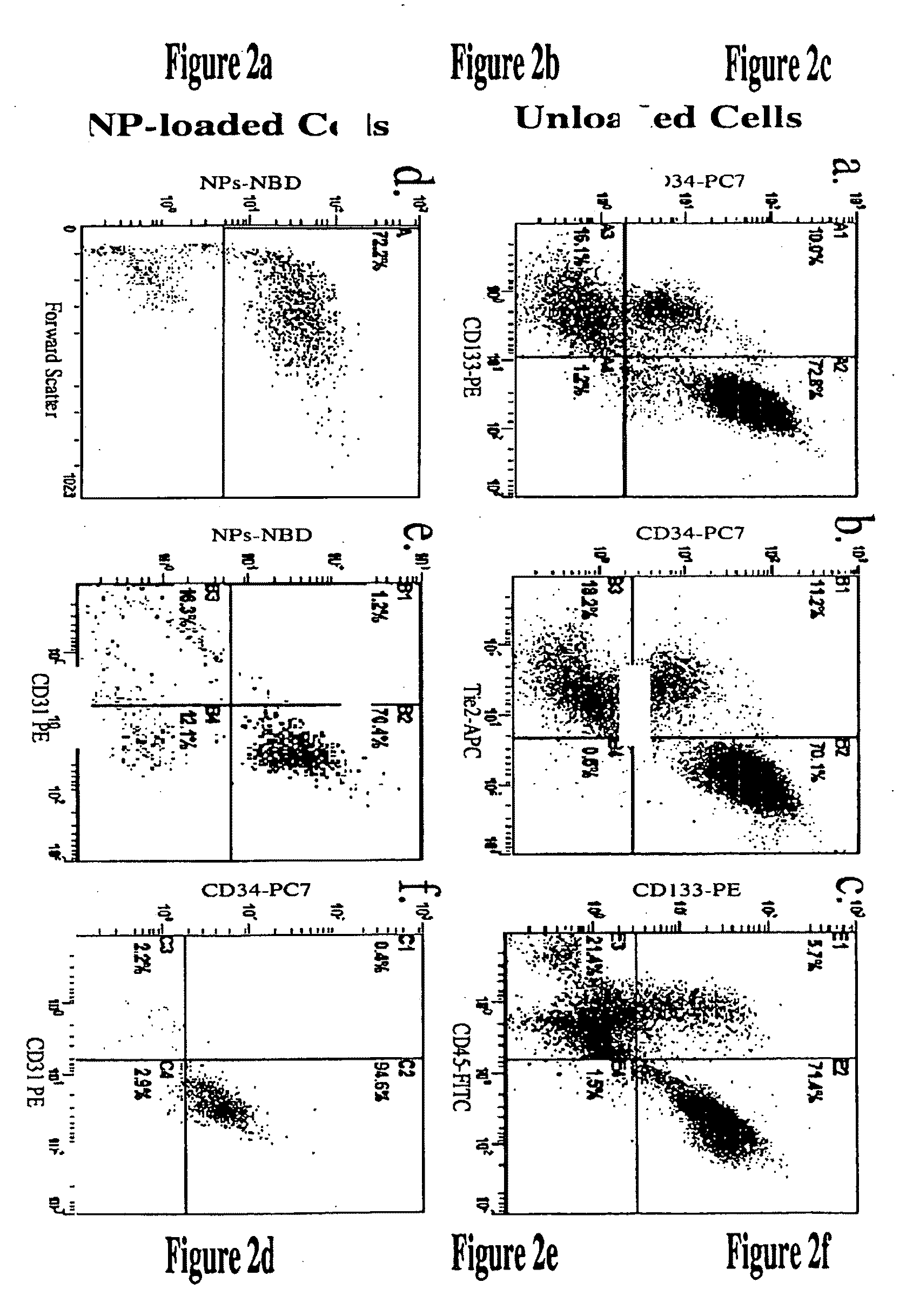Cell labeling with perfluorocarbon nanoparticles for magnetic resonance imaging and spectroscopy
a technology of perfluorocarbon nanoparticles and magnetic resonance imaging, which is applied in the direction of biocide, diagnostics, diagnostic recording/measuring, etc., can solve the problem of subject exposed to a magnetic field of reduced strength, and achieve the effect of minimizing the loss of input cells and minimal effects on cell viability
- Summary
- Abstract
- Description
- Claims
- Application Information
AI Technical Summary
Benefits of technology
Problems solved by technology
Method used
Image
Examples
example 1
Labeling Stem / Progenitor Cells with PFC Nanoparticles
[0070]Liquid PFC nanoparticles were formulated using methods previously developed in our laboratories (Lanza, G. M. et al. Circulation 94: 3334-3340, 1996). Briefly, the emulsions comprised 20% (v / v) perfluorocarbon (PFC) such as either perfluorooctylbromide (PFOB) or 15-crown-5 ether (CE), 1.5% (w / v) of a surfactant / lipid co-mixture, and 1.7% (w / v) glycerin in distilled, deionized water. Fluorescent nanoparticles contained fluorescent-conjugated phospholipids of either 2.05 mole % of NBD (1,2-dioleoyl-sn-glycero-3-phosphoethanolamine-N-(7-nitro-2-1,3-benzoxadiazol-4-yl)) or 0.135 mole % of rhodamine (1,2-dioleoyl-sn-glycero-3-phosphoethanolamine-N-(lissamine rhodamine B sulfonyl)) (Avanti Polar Lipids, Inc., Alabaster, Ala.) in the surfactant layer. The mixture of surfactant components, PFC and water was blended and then emulsified at 20,000 PSI for four minutes in an ice bath with an estimated temperature range of about 0° C. to...
example 2
Confocal Microscopic Imaging and Immuno-Characterization of PFC-Labeled Cells
[0072]To image PFC-labeled cells with confocal microscopy, labeled cells treated as described in Example 1 were first subjected to 2% paraformaldehyde fixation for 30 minutes. For confocal imaging fixed cells were placed in 1.5 glass bottom culture dishes (Bioptechs Inc., Butler, Pa.). Fluorescence imaging of cell sections was conducted with a confocal microscope (Zeiss Meta 510, Thornwood, N.Y.), using standard filter sets. The location of nanoparticles with respect to the cell was determined with simultaneous differential interference contrast (DIC) imaging.
[0073]Internalization of nanoparticles occurred without aid of any additional transfection agents or methods, characterized by abundant uptake and distribution throughout the cytosol for both PFOB and CE nanoparticles. Qualitatively for individual cells that internalized nanoparticles, a greater uptake of nanoparticles appeared for PFOB-loaded as compa...
example 3
Effects of PFC Nanoparticle Labeling on Cell Viability and Function
[0077]To determine if PFC nanoparticle labeling affected cell viability, the percent (%) cell survivability after labeling of cells as described in Example 1 was determined by trypan blue exclusion. Cells labeled with either CE or PFOB nanoparticles were removed with trypsin, resuspended in PBS, and diluted 1:1 with 0.4% trypan blue (Sigma, St. Louis, Mo.). For a positive control, cells were heated at 45° C. for 15 min. The number of viable and nonviable cells was counted using a hemocytometer with the percentage of trypan blue positive cells was used to calculate cell survival. We found high cell survivability (˜90%) of cells subjected to labeling procedure of Example 1 with no significant difference from non-labeled control cells (FIG. 3a). Positive control cells exposed to high temperature manifested a substantial loss of cell viability (˜60% cell survivability). Accordingly, neither PFOB nor CE nanoparticles exer...
PUM
| Property | Measurement | Unit |
|---|---|---|
| diameter | aaaaa | aaaaa |
| magnetic field | aaaaa | aaaaa |
| slice thickness | aaaaa | aaaaa |
Abstract
Description
Claims
Application Information
 Login to View More
Login to View More - R&D
- Intellectual Property
- Life Sciences
- Materials
- Tech Scout
- Unparalleled Data Quality
- Higher Quality Content
- 60% Fewer Hallucinations
Browse by: Latest US Patents, China's latest patents, Technical Efficacy Thesaurus, Application Domain, Technology Topic, Popular Technical Reports.
© 2025 PatSnap. All rights reserved.Legal|Privacy policy|Modern Slavery Act Transparency Statement|Sitemap|About US| Contact US: help@patsnap.com



